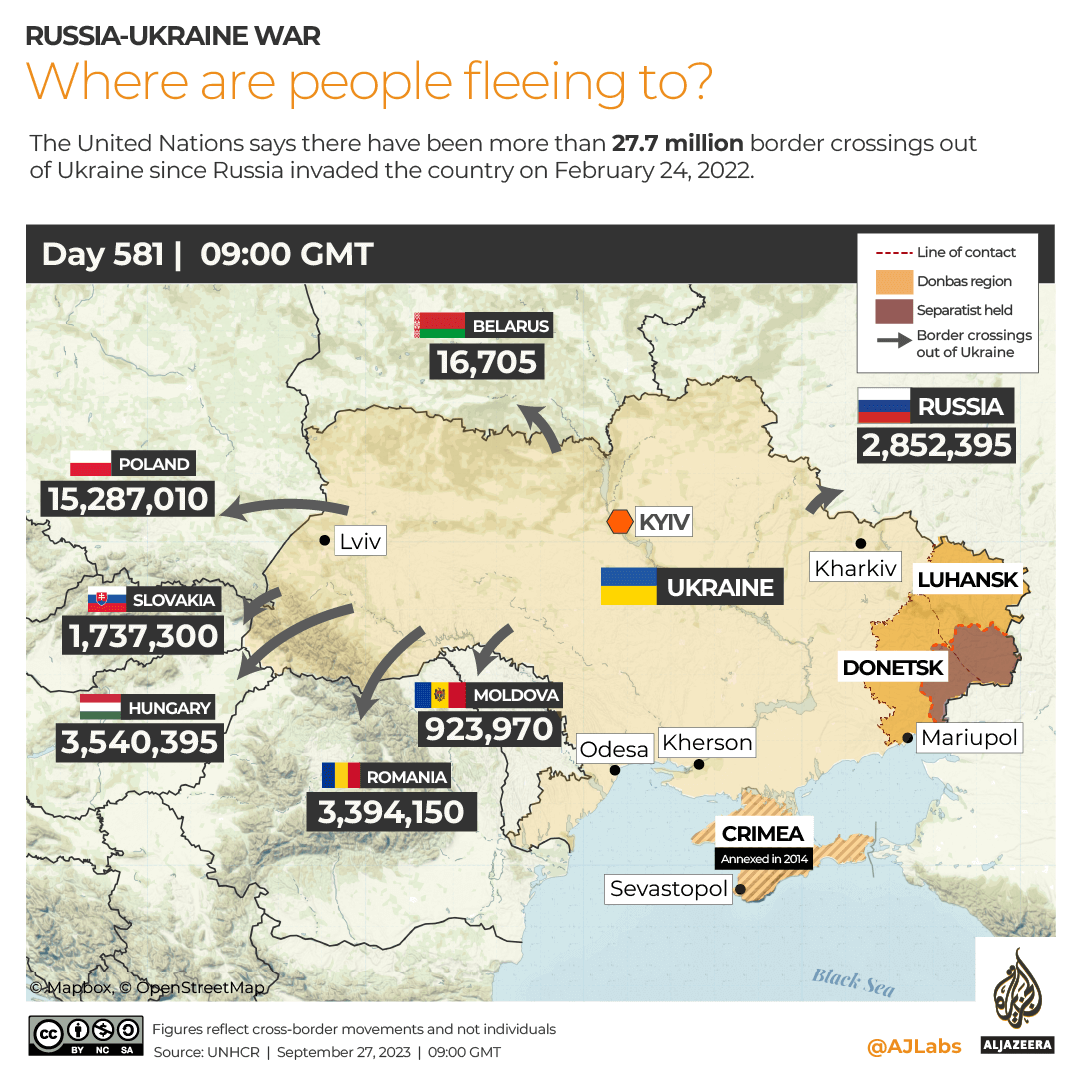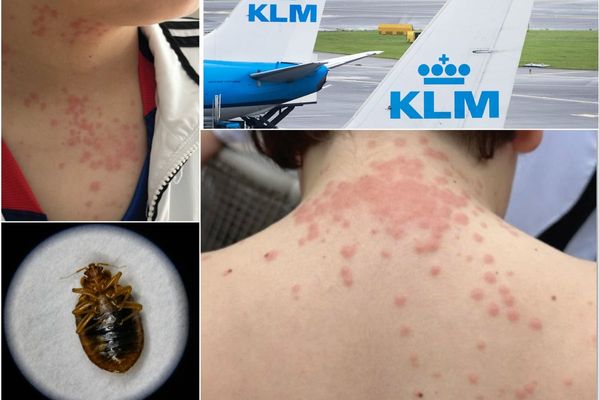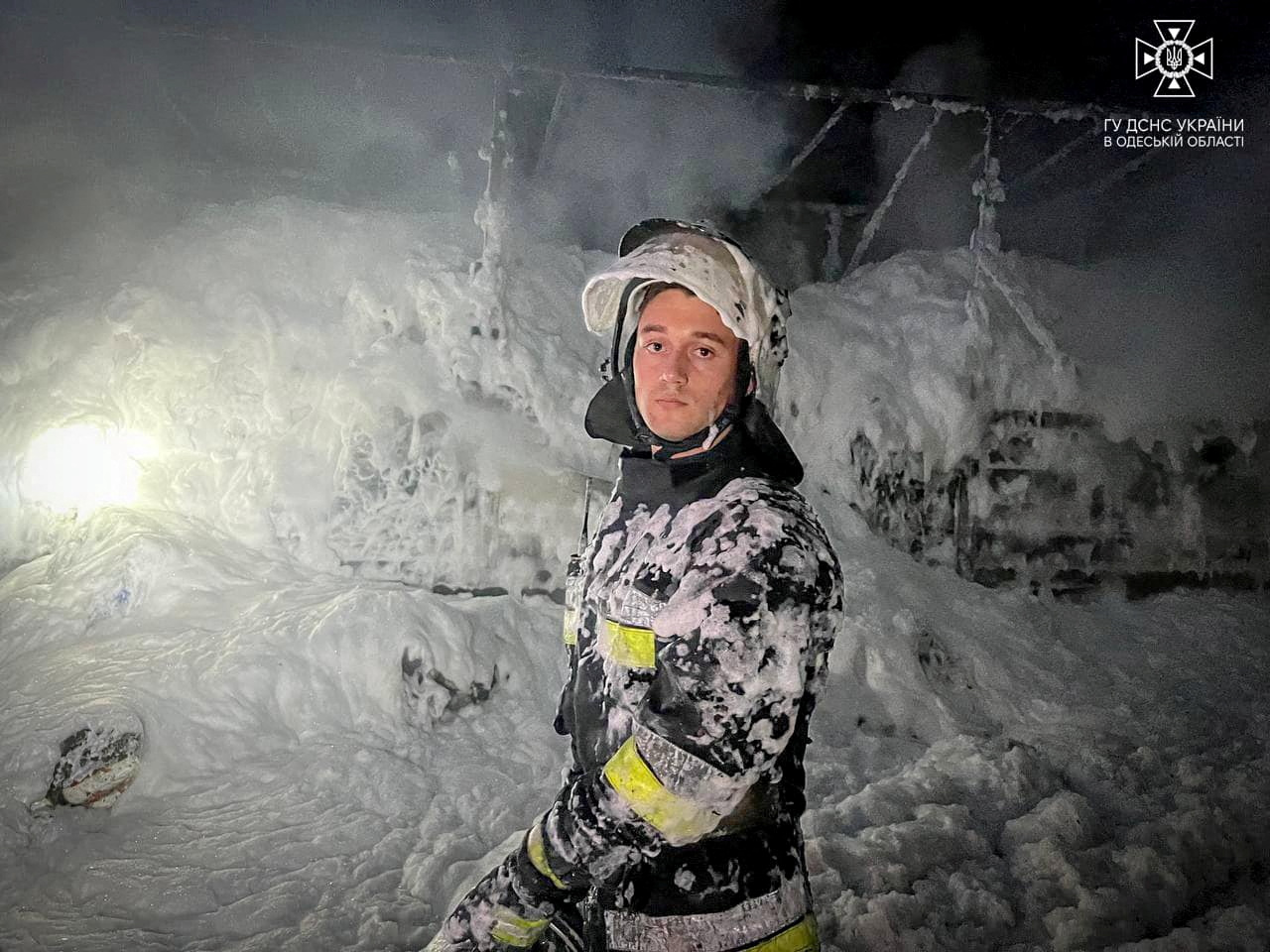
Ukraine scored devastating deep strikes against Russian-occupied Crimea in the 83rd week of the war, as President Volodymyr Zelenskyy toured Europe and the United States picking up pledges of new long-range weapons and financing.
At the same time, Ukrainian and Western sources confirmed that Ukrainian troops had broken through the first and strongest line of Russian defence on the southern front, known as the Surovikin Line after the general who devised it. That success could accelerate their march towards the cities of Tokmak and Melitopol.
Ukraine attacked three targets in occupied Crimea in as many days, honing its signature tactic of using a wave of drones to destroy or distract air defences, followed by a wave of missiles.
Satellite images showed that attacks destroyed half of the Black Sea Fleet’s communications command centre in Verkhnosadove, 16 kilometres (10 miles) northeast of the fleet base in Sevastopol, on September 20.
Aftermath of the Ukrainian strike at the Black Sea fleet command post near Sevastopol. Comparison of the @planet satellite imagery captured on Aug. 22 and Sep. 21. Russia claimed that all the rockets were intercepted, and the smoke seen on the video was caused by a burning grass. pic.twitter.com/p7jTlFv8U6
— Mark Krutov (@kromark) September 21, 2023
The following day Ukraine attacked the Saky airfield – the second time it has done so during the war. The Ukrainian broadcaster Suspilne reported the attack caused “serious damage” and that 12 Russian combat aircraft were present, including Su-24 and Su-30 fighter-bombers.
The most crippling attack came on September 22.
Ukraine hit the Black Sea Fleet command headquarters and claimed to have killed 34 officers, including fleet commander Admiral Viktor Sokolov. A further 105 were reportedly wounded.
One Sevastopol resident filmed the moment when the second missile struck.
Russia’s defence ministry attempted to deny the attack, and later denied Sokolov was dead, circulating a video purporting to show him taking part in a teleconference on September 26.
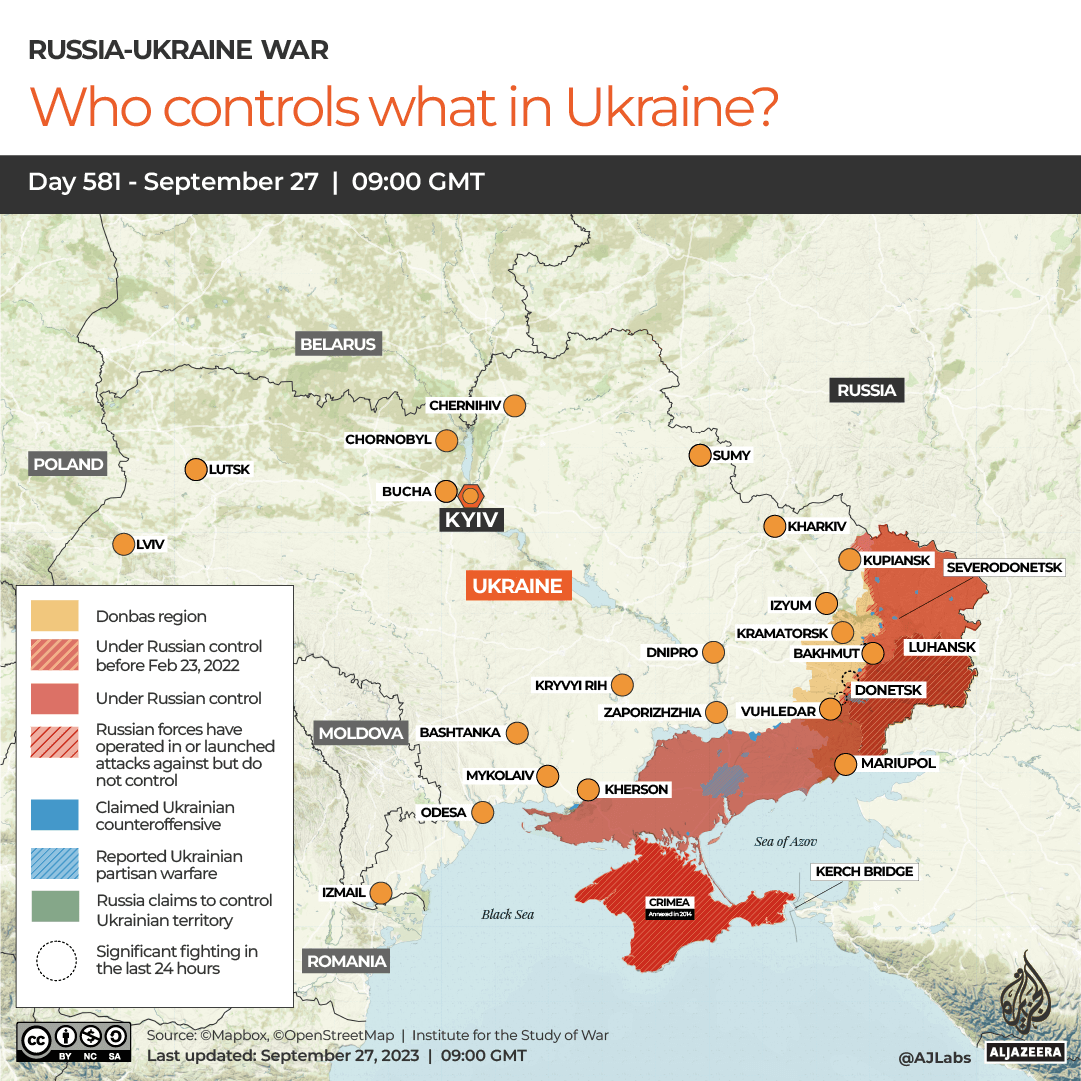
Ukraine’s military intelligence chief said the attack also seriously wounded the commander of Russian forces on the southern front, Colonel General Alexander Romanchuk.
Russian occupation authorities said Ukraine targeted Sevastopol again the following day, but air defences neutralised the attack.
Improved intelligence to “understand when the Russian leadership is getting together” was one reason for Ukraine’s success, Colonel Seth Krummrich, who has led special forces detachments in Afghanistan and the Middle East, and currently serves as vice president for Global Guardian, a security consultant, told Al Jazeera.
The second was improved weapons systems from the West. Ukraine used Storm Shadow missiles provided by the United Kingdom and France.
The political result was that “people are going to feel vulnerable,” said Krummrich.
“You have a lot of wounded coming back to Russia who are disillusioned or resentful and you have a lot of people who are not coming back at all,” he said. “The truth is definitely on the Russian street … this is like radiation or toxicity, slowly building up in the population, and over time it could become lethal to a government.”
Ukrainian knowledge of the terrain was also important, US special forces commander Dimitries Andrew Grimes told Al Jazeera.
“They know the territory; they know where the targets are. They know Crimea and Sevastopol and how to achieve the effects they want to achieve,” he said.
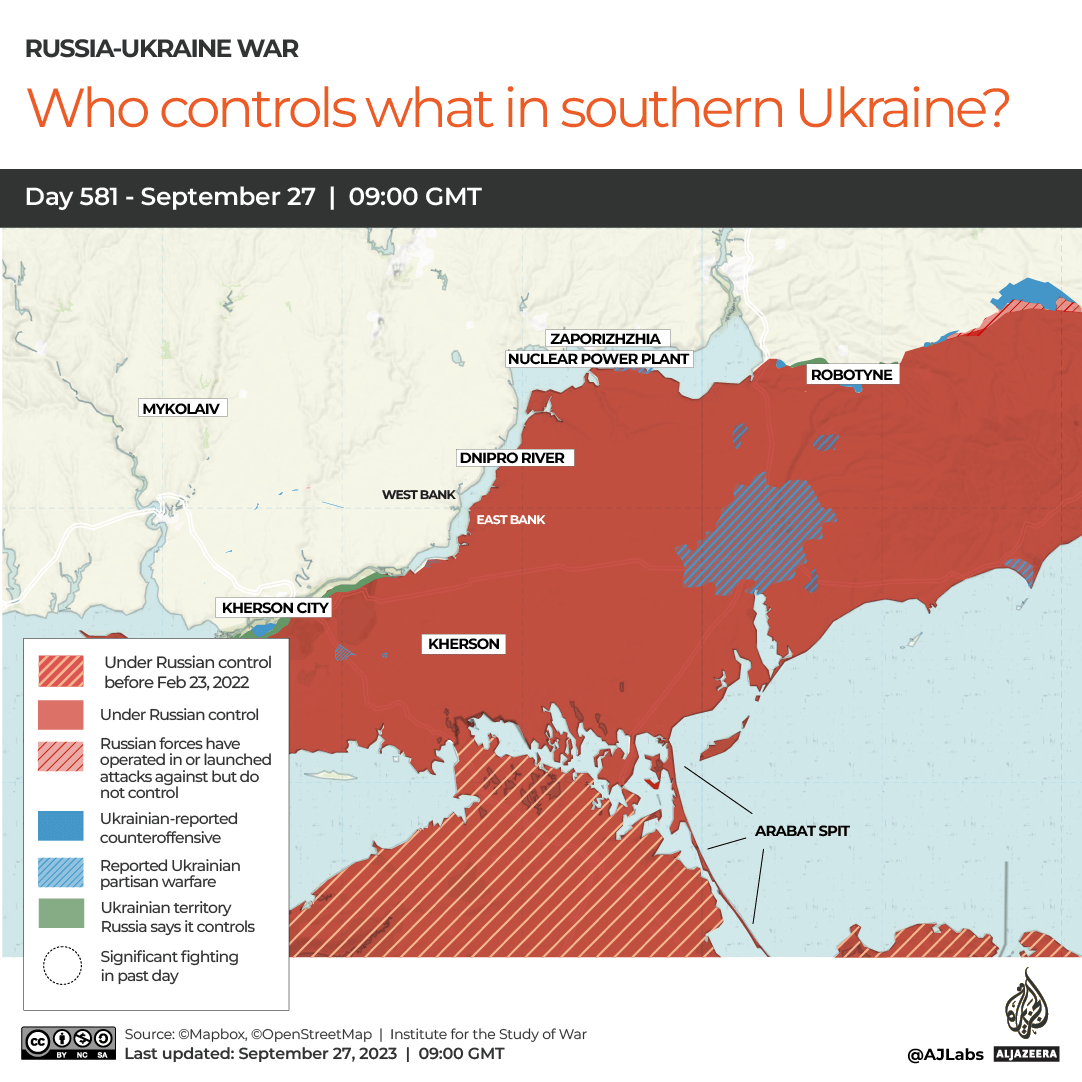
The attacks in Crimea coincided with a series of visits abroad by Ukrainian President Volodymyr Zelenskyy, designed to pick up diplomatic, military and financial aid.
The tactic apparently worked.
US media, citing government sources, confirmed Washington would provide Army Tactical Missiles, or ATACMS, which Ukraine has been seeking.
The 300km-range (186-mile) weapon has significantly greater reach than the 250km-range (155-mile) Storm Shadow missile, but independent weapons analyst Colby Badhwar said the ATACMS’ key advantage was speed.
Storm Shadows are launched from aircraft, meaning a two-hour delay between identifying a target and striking it, allowing for time to mount the missiles and flying the aircraft within range of the target.
“Ground launched ballistic missiles on the other hand, can be fired from a launcher already near the front line, and hit their target within a matter of minutes, thanks to their speed,” wrote Badhwar. “This responsiveness is critical for engaging Time Sensitive Targets.” These include missile launchers, aircraft and battlefield armour.
ATACMS would also boost Ukraine’s thin inventory of sophisticated missiles.
The Washington Post said the administration of US President Joe Biden was considering only the cluster version of ATACMS, but retired Lieutenant General Ben Hodges said this was unsuitable for Ukraine because it has a shorter range than the single warhead version.
It would “not [be] as effective at destroying large Russian facilities in Crimea,” he told Newsweek. “The [Biden] administration still seems to have a fear of providing long-range precision strike capability, which Ukraine might use against targets inside Russia,” Hodges said.
Ukraine has been using only weapons of its own manufacture to hit Russia, and on September 24 it struck the Khalino Airfield near Kursk, reportedly killing aviation officers.
First Russian defences breached
Geolocated footage placed Ukrainian armoured vehicles behind the Russian first line of defence in Verbove, western Zaporizhia, on September 21. The Washington-based Institute for the Study of War, a think tank, said this was the first instance of Ukrainian forces operating beyond the tri-layered defence – part of what is known as the Surovikin Line.
Two days later, Ukraine’s southern forces commander told CNN, “we have a breakthrough”, and the ISW confirmed the advance. “These fortifications are not the final defensive line in Russia’s defence in depth in western Zaporizhia Oblast, but rather a specific series of the best-prepared field fortifications arrayed as part of a near-contiguous belt of an anti-vehicle ditch, dragon’s teeth, and fighting positions about 1.7 – 3.5km (1.05-2.17 miles) west of Verbove,” the ISW said.
Russian military reporters confirmed that Ukrainian units broke into Verbove itself on September 22. They also reported Ukrainian progress towards Novoprokopivka, in the same sector of the Zaporizhia region. According to one, Ukrainian forces were within 800 metres of the settlement.
Ukraine’s success has not come easily.
The ISW said Ukrainian forces were pinning down elements of three Russian divisions, and that additional elements of other divisions had been called forward from rear defence positions in Tokmak, 18km (11.2 miles) away from the front, to assist them.
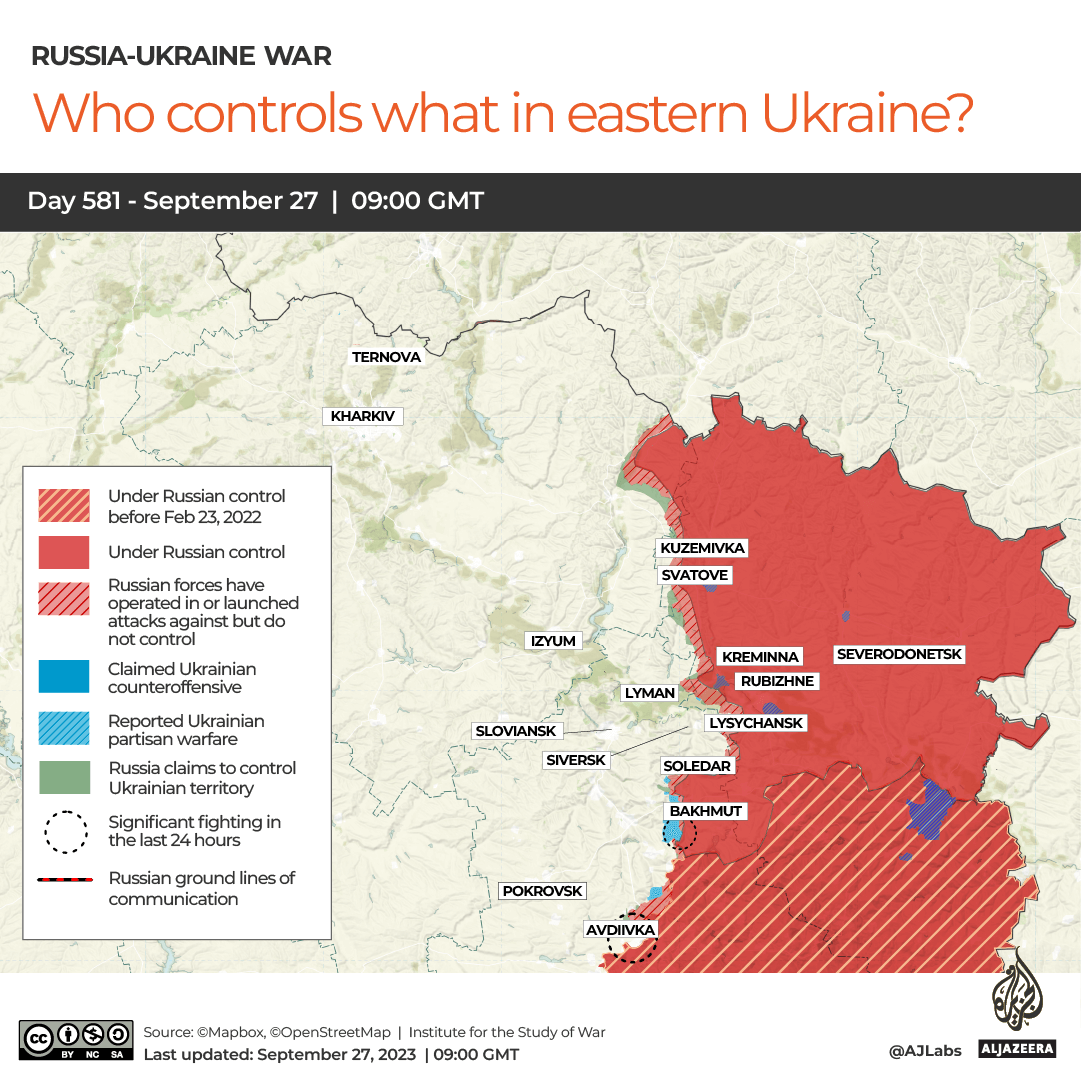
“It’s obvious the Russians are on the defensive right now,” said Grimes. “They’re operating with conscript forces because they’ve lost a lot of their élite forces, so they’re throwing their conscripts into the meat grinder.”
Russian commanders have also ignored their own playbook, whereby “one echelon of Russian forces slows a Ukrainian tactical advance while a second echelon of forces counterattacks,” said the ISW.
“Russian forces continue to expend significant combat power on counterattacking to hold their current positions and appear to be resisting the operationally sound course of action of falling back to prepared defensive positions further south,” it said.
Some observers have said Ukraine risks losing global support because its advance has been slow. Krummrich believed Ukraine’s deliberative approach was key to its success.
“When [countries] see Ukraine moving forward, that strengthens their righteous position on the world stage to say, ‘You need to back us’. If the Russians were blowing through Ukraine, a lot of midrange countries might say, ‘We’re going to hedge our bets on this.’”
